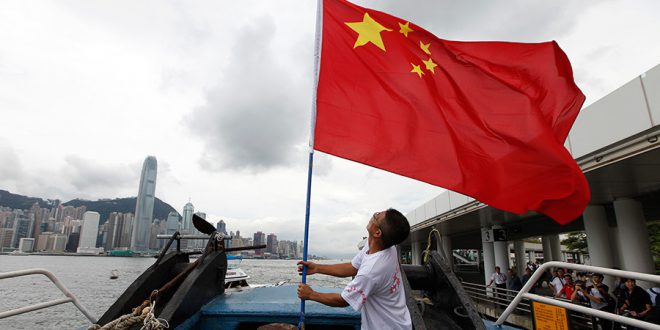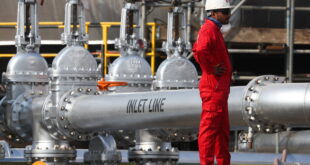The announcement last month that China and India are considering forming an “Oil Buyers’ Club“ to counter the market power of the Organization of Petroleum Exporting Countries is proof that the run-up in oil prices this year. from $30 a barrel to $80. is happening in a very different context than spikes of the past. The proposed alternative to OPEC could be good news for importing nations` economies and the environment.
Like any cartel. OPEC exists to raise the price of oil by reducing competition. Its biggest risk is that if it lifts the cost too high. competitors (such as U.S. shale producers) will pump too much crude. or customers will find substitutes for oil.
OPEC has been able to dodge this bullet because it controlled the cheapest oil. When demand grew. the cartel would curb production and raise prices. Independent producers would bring new oil fields to market but that could take a decade. When competition did gain momentum. OPEC would open the spigots again and drive prices down. Its competitors would then be pushed out of business. as happened most recently in 2014. The periodic low prices also prevented alternative fuels from displacing oil.
By heading off both competition and substitution. OPEC`s strategy sustained oil’s monopoly as a transportation fuel for decades. Even when fuel costs soared. as they did in 2003-2014. global travel kept on growing with the world economy.
But when concerns about climate change combined with the economic pain of $100 a barrel crude. energy-importing nations began looking for ways to end their dependence on a dirty and exorbitantly priced fuel. Perhaps there was an alternative to OPEC’s gouge-and-crash cycle? Premier Wen Jiaobao of China proposed creating a counter-cartel in 2012. but other importers. including Europe and the U.S.. didn’t seem interested.
Now the accelerated commercialization of electric vehicles has made the oil monopoly and OPEC’s stranglehold over the world economy increasingly anachronistic. So this time is different. Oil prices hit $80 only a month ago. and have already eased. But well before that peak. economists were warning oil importers like India and China that if prices continued to move toward OPEC’s target range. there would be major slowdowns in their economic growth. In the U.S.. economists concluded that higher oil prices in 2017 had reduced real incomes for labor segments. including 80 percent of the U.S. labor force.
President Donald Trump has tweeted his alleged outrage at OPEC’s cartel activities several times.
The announcement by China and India that they are joining forces to challenge OPEC’s high-price strategy is likely to attract support from Japan and Europe.
This is good news: Cartel prices transfer inordinate wealth to petrostates like Saudi Arabia. Iran and Russia. and hurt the rest of the global economy. The Oil Buyers` Club is also potentially very good news for the environment. Transportation accounts for 70 percent of our oil. which is now the biggest source of climate pollution. That makes electric vehicles the key to ending our addiction to oil — cheap or expensive. Even Royal Dutch Shell`s latest analysis concedes that electrification is essential to meet the Paris climate goals.
Both India and China in the past year have positioned themselves to speed the electric-vehicles revolution. The auto-producing. oil-importing EU would be an obvious electrification partner. Japan. with its leadership in the advanced battery market. has every incentive to join. Together. China. India. Europe and Japan have the manufacturing clout (they account for 65 percent of the world’s vehicles) and the buying power (they consume 35 percent of the world’s oil) to rapidly replace the dirty. outmoded internal combustion engine with electric vehicles.
The U.S. is unlikely to join with China and India. though it should. Trump claims America is a net oil producer. not a consumer. even though the country still runs a trade deficit on oil of around $200 billion. as large as the combined U.S. trade deficits with Canada. Germany and Japan.
Still. a group made up of China. India. Europe and Japan could wield a very strong negotiating hand. It could make clear to OPEC that transportation is undergoing a transition away from oil and toward electricity. and that the shift could be more gradual if all sides can agree on moderate prices. say $30 to $50 a barrel. But if OPEC is going to keep spiking crude up to $60. $80 and $100 a barrel. the nations of the counter-cartel could unite behind rapid electrification and far more oil will remain in the ground.
Either outcome would cut oil demand by 50 percent or more by mid-century. as the Paris goals require. and would signal the end of the petroleum era.
OPEC will push back. In theory. it can ramp up or ramp down oil production and prices very quickly — far faster than importers can electrify transportation. At the same time. OPEC members have a strong incentive to pump more oil than their quota when prices are high. So the cartel has a hard time making. and enforcing. agreements. In contrast. members of an Oil Buyers` Club would have an incentive to outperform their commitments to electrification to try to get the upper hand in tomorrow’s electric vehicle market.
That means OPEC will pay a higher price if it overplays its hand. Once its adversaries decide to expand the electric-vehicle market with policy incentives. ownership is unlikely to scale back even if the cartel later agreed to lower long-term prices for oil.
So a buyer’s club. if it includes a large enough share of oil consumers and auto manufacturers. could come out on top. It remains to be seen whether the nascent China-India collaboration announced this month will flourish into such a full-fledged counter-cartel. But if it does. it could be a geopolitical. economic and climate game changer. Markets should be paying attention.
 Iran Energy News Oil, Gas, Petrochemical and Energy Field Specialized Channel
Iran Energy News Oil, Gas, Petrochemical and Energy Field Specialized Channel




